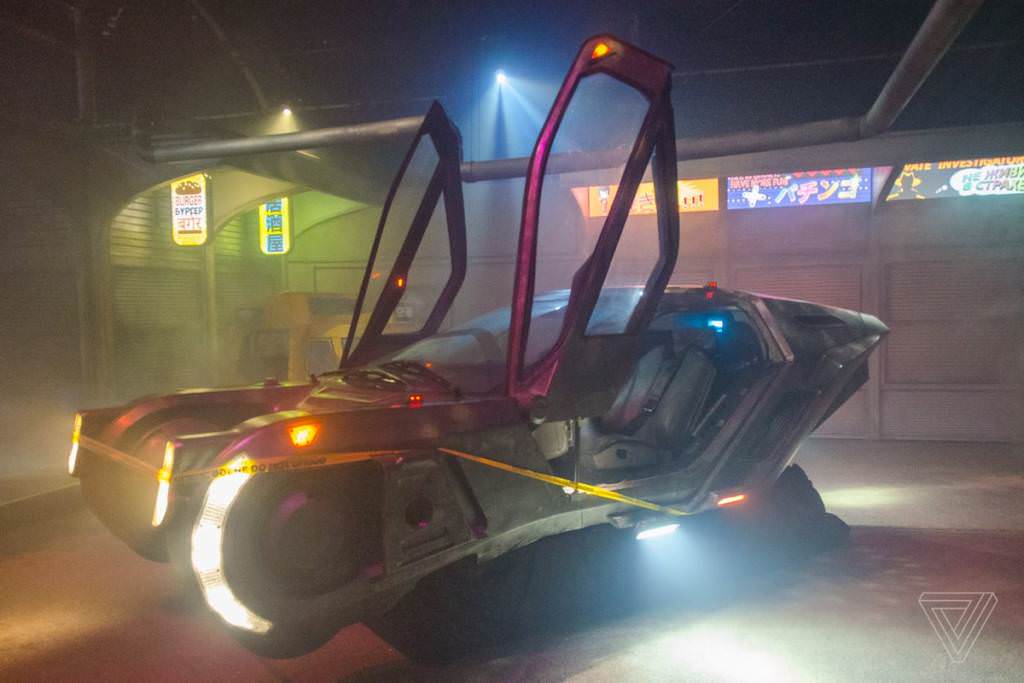It has taken 35 years for Blade Runner to finally get a sequel and Alcon Entertainment, which acquired the rights to create new movies based on this property in 2011, has big plans for it.
Blade Runner 2049 opens October 6 and stars Ryan Gosling and Harrison Ford, who reprises his role as Rick Deckard from Ridley Scott’s original film. Scott and Hampton Fancher (co-writer of the original film) created the story for this sequel, which is set several decades after the original and returns audiences to a dystopian Los Angeles setting. Denis Villeneuve (Sicario, Prisoners) directed the film with Scott serving as executive producer.
While Warner Bros. will handle domestic distribution and Sony Pictures Releasing International handling the overseas distribution, Alcon is handling the film’s marketing. The first big push for the film came at San Diego Comic-Con in July, where a tent-covered parking lot was converted into the street scene from the original film—complete with vehicles and actors playing the roles of policeman, prostitutes and even a noodle chef. The entire experience was sponsored by Johnnie Walker, which is also one of the brands featured in both films.
Alcon co-founder and co-CEO Andrew Kosove, who serves as producer on Blade Runner 2049, told AListDaily that the people who come to Comic-Con are the most passionate fans in the world of storytelling.
“It started as comics decades ago and now it’s about a lot of different content, but it’s still about great stories,” Kosove said. “For those people to come and experience an immersive multimedia experience that combines VR with a practical set, and then for them to tell other people about it, is hugely valuable for us in spreading the word about Blade Runner 2049.”
The Oculus virtual reality experience, Blade Runner 2049: Replicant Pursuit, was created by Turtle Rock Studios using Unreal Engine 4. The presentation in San Diego featured Samsung Gear VR goggles and a D-BOX theater.
“We think this is really state-of-the-art VR and the D-BOX chairs give people the full motion of experiencing what it would be like to fly in a spinner through Los Angeles,” Kosove said. “Then when they land, they actually arrive in the physical set that we’ve recreated for them.”
The street scene, including the famous noodle bar from the original, was a two-thirds scale replica of what was used in the new film.
“One of the key aspects of our approach on Blade Runner 2049 was to do as much in-camera as possible,” Kosove explained. “Our brilliant director, Denis Villeneuve, who directed Prisoners for us, doesn’t like green screen, and frankly neither do I. So, we have visual effects, but very little of this movie is done in green screen. It’s really a very practical experience and allows the actors to work in a tactile environment where they had real props and real sets to work with. That was a big part of the creative vision for the movie.”
Part of those sets was retaining the iconic brands, including Atari and Johnnie Walker, which were featured in the original 1982 film.

“We have a rule, which is that the original Blade Runner took place in 2019,” Kosove explained. “We’re in 2017, so obviously the Blade Runner 2019 is not our 2019. We’ve approached Blade Runner as an alternate timeline. So, our 2049 isn’t like what we expect 2049 to be thirty years from now. It’s what we expect it would be like in the Blade Runner world thirty years after the original film. No brand that did not exist when the original movie came out was eligible to be part of our film. Apple is not in the Blade Runner world. It doesn’t exist. IBM could, but not Apple. Of course, one of the most iconic aspects of the first film is Atari, and we thought we had to bring Atari back into our film and that’s why we did it.”
Atari was featured in the first trailer for the sequel, and can also be seen in the VR experience. “We think the design element and that shot of the spinner going through the deep canyon—we just love it,” Kosove said.
But when it comes to the classic Atari 2600 console, Kosove didn’t actually own one. “I honestly didn’t grow up as a big video gamer and my household didn’t allow it, so when I’d go to a friend that had an Atari, it was like the greatest thing,” Kosove said. “I was so delighted, and I remember the various games like Combat and really enjoyed it.”
Atari has partnered with NECA (National Entertainment Collectibles Association) to launch a Blade Runner 2049-themed speakerhat this fall ahead of the theatrical release. The speakerhat plays music through speakers hidden in the brim, and also has a social multi-person feature that allows people to share music and even talk to one another wirelessly through their smartphones.
“The Blade Runner Atari hat we’re debuting with wearable technology very much fits into the Blade Runner concept, where Blade Runner has influenced fashion,” Kosove said. “That’s an example of where Atari and Blade Runner, two brands, can combine to do something together. It’s awesome.”
As long as the new film connects with the large audience that has grown up watching the original, the plan is to bring more Blade Runner stories in the near future.

